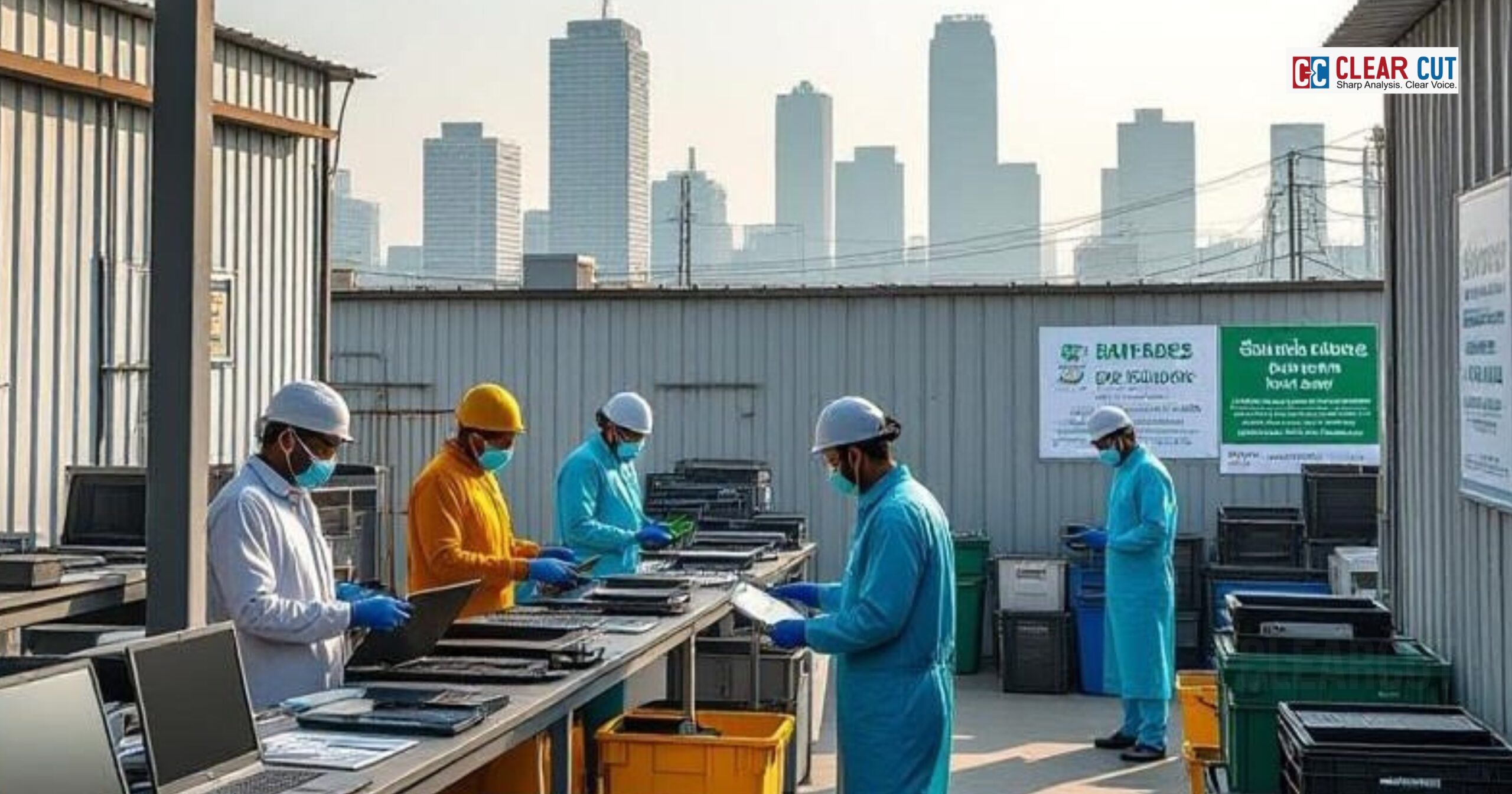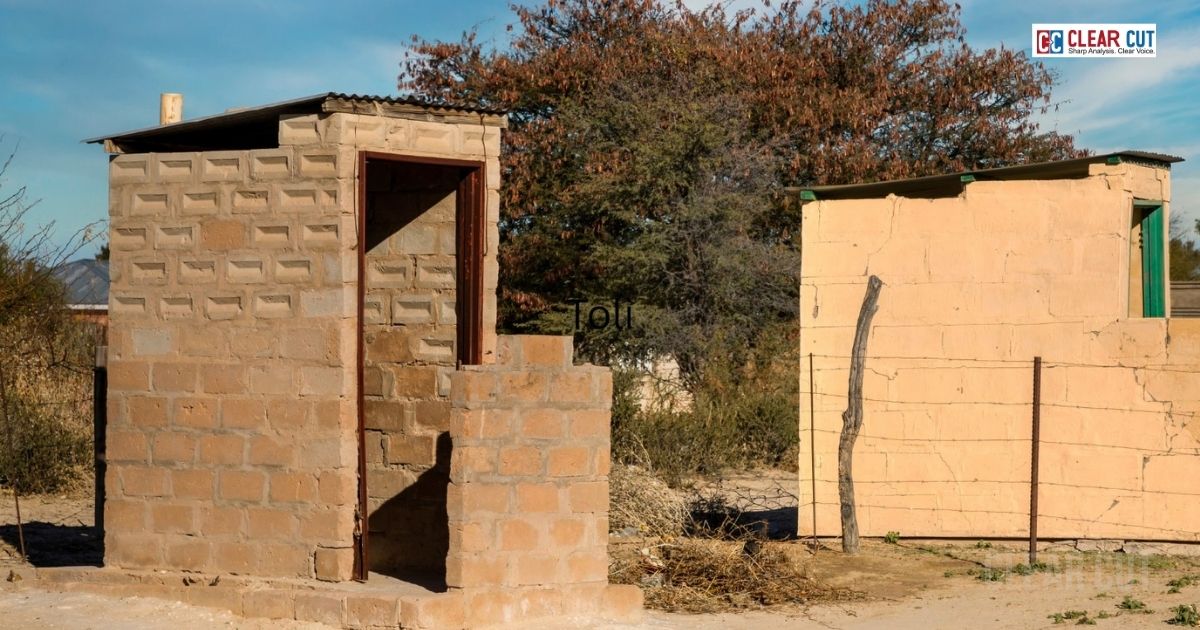Photo Credit: Antara Mrinal
Clear Cut Climate Desk
New Delhi, UPDATED: Oct 14, 2025 04:20 IST
Written By: Antara Mrinal
On October 13, 2025, India disclosed a new five-year initiative, funded by the United Nations Development Programme (UNDP) and the Global Environment Facility (GEF), to expedite India’s transition to a circular economy in the electronics sector. The Ministry of Electronics & Information Technology (MeitY) is a co-lead on this initiative to improve how India engages with e-waste from design to disposal. According to The CSR Universe, GEF has ratified a funding proposal of US$15 million; the remaining funding will come from co-funding from the government and industry, resulting in a total investment of US$120 million (around ₹1,000-1,100 crore).
This announcement comes as India confronts one of the world’s rapidly growing e-waste challenges. This is beyond a waste management program; it might be the most important step toward integrating the responsibility for the environmental and social impacts of production and consumption to industry, health, and resource security, into industry.
The E-Waste Landscape in India: Scale, Gaps and Hazards
India is already the world’s third-largest producer of e-waste, estimated around 1.75 million metric tonnes in the fiscal year ending in 2024, an increase of 75% over five years.
However, a large part of this stream is outside of formal systems. About 80-95 per cent of India’s electronic waste is managed by the informal sector, operating within rudimentary methods posing an awful risk to health and the environment. For example, Delhi generates just under 2.3 lakh metric tonnes of e-junk on a yearly basis (approximately ten percent of the national figure), but 95 per cent of this waste is treated informally, leaving workers and communities vulnerable to toxic chemicals and lost recovery value (The Times of India).
The formal recycling capacity in India is still limited. In the 2021-22 timeframe, India’s e-waste production was roughly 1.6 million tonnes, with the Council on Energy, Environment and Water (CEEW) estimating the recycling portion to be around 0.5 million tonnes (≈ 33 percent). CEEW estimates the e-waste share processed (entering recycling or formal channels) has increased from 22 percent in 2019-20 to 43 percent in 2023-24, indicating that ~57 percent of the total tonnage remains unprocessed (~9.9 lakh tonnes). Looking at it in the bigger picture, the Global E-waste Monitor 2024 currently estimates that in 2022, the e-waste collected and responsibly recycled was only 22.3 percent, and if it continues this way, it could plunge to 20 percent by 2030 (E-waste Monitor).
Moreover, the report adds the global benefits (in health, materials, and avoided risks) to the costs of increasing collection and recycling to 60 percent by 2030 will be over US$38 billion. The urgency and magnitude of India’s problem is simply stated: find a way to enable safe, efficient recycling, limit informal activity, and extract value from e-discard.
What the New Initiative Seeks to Do
The new initiative has a framework that is organized along several axes:
Formalizing the Recycling Ecosystem: The initiative aims to strengthen systems for processing e-waste through regulated processing, infrastructure improvement, and engagement of informal operators in more formalized value chains.
Eco-Design and Innovation: It will pilot policies and incentives to promote eco-design, which entails designing electronic equipment to be easier to dismantle, repair, or recycle- and promote innovation relating to material recovery and battery management systems.
Strengthened Regulation and Enforcement: The project will assist in strengthening the enforcement of e-waste laws (such as the E-Waste Management Rules) and institutional supervision at the state and local levels.
Institutional mechanisms and stakeholder engagement: It aims to align government agencies, industry, recyclers, and communities, as well as help provide better data systems, oversight, and partnerships.
Mobilizing Co-financing & Industry Participation: Although US$15 million will be funded by GEF, the balance of US$105 million will come from central/state governments, private industry, and other resources ensuring that the stakeholder will have a vested interest in outcomes.
The GEF project registry references the following goals: to reduce harmful chemical releases, increase metal recovery, and strengthen the governance systems within the context of integrated e-waste (Global Environment Facility).
Why It Matters: Health, Resource Security & SDG Synergies
Through the lens of the Sustainable Development Goals, this program engages multiple dimensions:
SDG 12 (Responsible Consumption & Production): This program focuses on circularity and specifically addresses one of the foremost challenges of sustainability – how to decouple resource use from waste creation. Safe and effective recycling and materials recovery ensures that metals, plastics, and rare earth materials do not go to waste.
SDG 9 (Industry, Innovation, Infrastructure): From both formalization of recycling systems, and supporting eco-design and new business models, recycling can enhance innovation in the electronics sector. Systematization of recycling can also contribute to new enterprise growth.
SDG 3 (Good Health & Well-being): Informal e-waste processing involves non-professional burning, acid baths, and unsafe handling that results in heavy metals (lead, mercury, cadmium) and toxic fumes contaminating all workers and nearby communities. Managing e-waste processing through duly regulated systems reduces health risks and environmental contamination.
Equally, the program contributes to climate and biodiversity goals: less leakage and exposure to toxic compounds into soil and water; less inefficient emissions in processing and reduced pressure for extraction from virgin mineral source.
Early Signals & Local Successes
A number of municipalities are already making strides. For example, in Mumbai the Brihanmumbai Municipal Corporation facilitated 15,000 kilograms of e-waste collection through private recyclers in 2025. This was a small but optimistic step in beginning to secure civic engagement in collection systems (The Times of India).
Regarding market forces (e-waste), the Indian e-waste sector was estimated to be worth USD 1.6 billion in 2024 and expected to increase to USD 2.8 billion by 2033 (CAGR ≈ 6.6 %) (IMARC Group). This demonstrates enough of an economic case for formal recycling to be recuperative and potentially scalable.
Meanwhile, in Delhi, ~2.3 lakh tonnes of e-waste is generated (10 % of India’s total) with 95 per cent handled informally. A proposed formal eco-park at Holambi Kalan with capacity of 1.10 lakh tonnes is expected to take some pressure off of the informal sector (The Times of India).
Conclusion: A Defining Moment or a Promise Yet Unfulfilled?
India’s initiative on ₹1,000 crore in electronics recycling may be the largest environmental initiative for the decade. This is more than waste management; this redefines the ways in which electronics are made, used, and re-used in a resource scarce environment. If this initiative is executed properly, the value that can be captured is extraordinary; reduction of hazardous materials, reclamation of important metals, decreased reliance on imports and creation of circular business ecosystems. The main challenge consists of closing the gap between the formal and informal sectors, creating regulation for standards that is not stifling the industry, rapidly expanding infrastructure, and making data informed adjustments.
October 2025 will likely be remembered as the beginning of the moment when India decided to move from a linear model of e-waste disposal to a new circular future. The stakes are high, but the prize – both for health, environment, industry, and sustainable development even higher.




